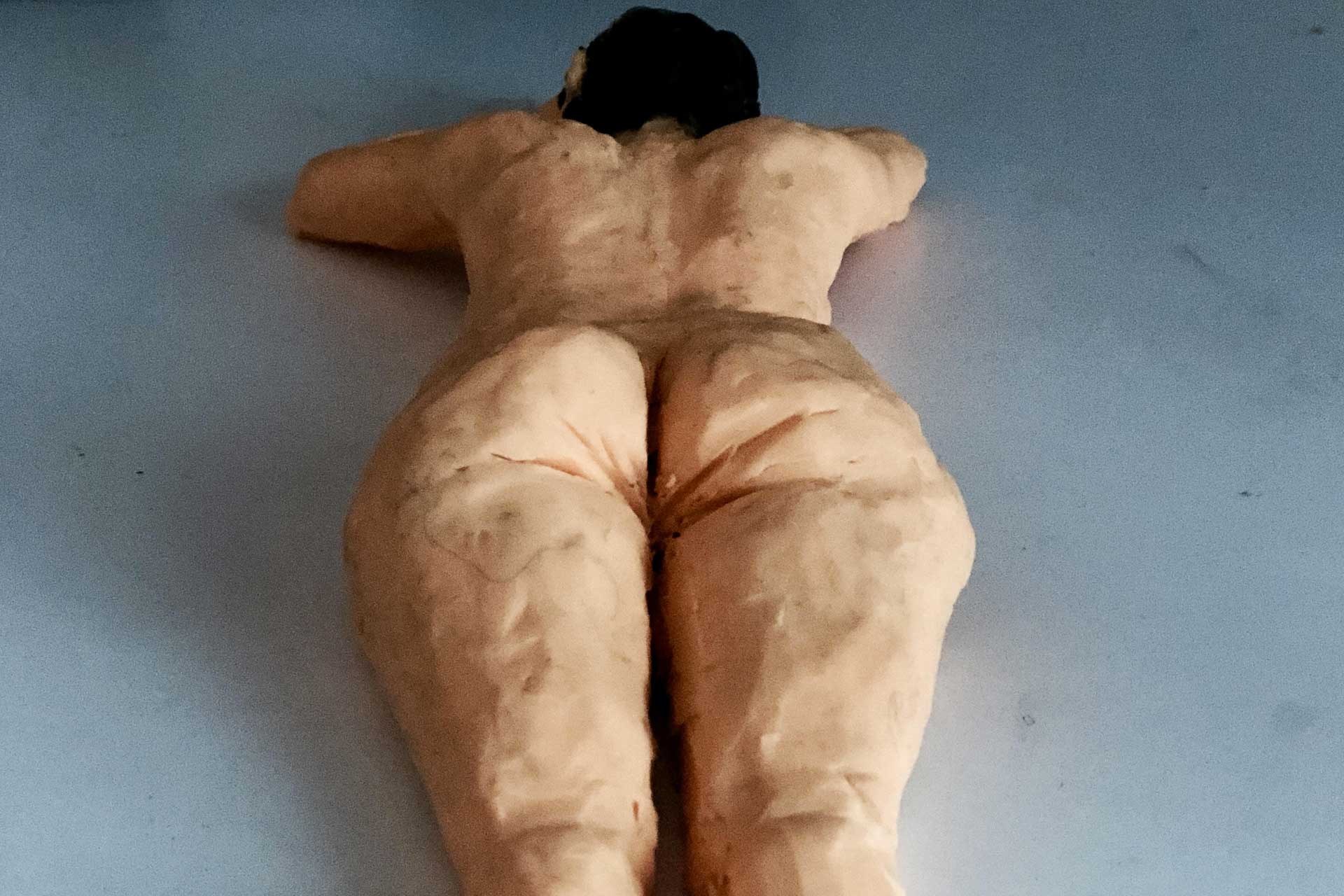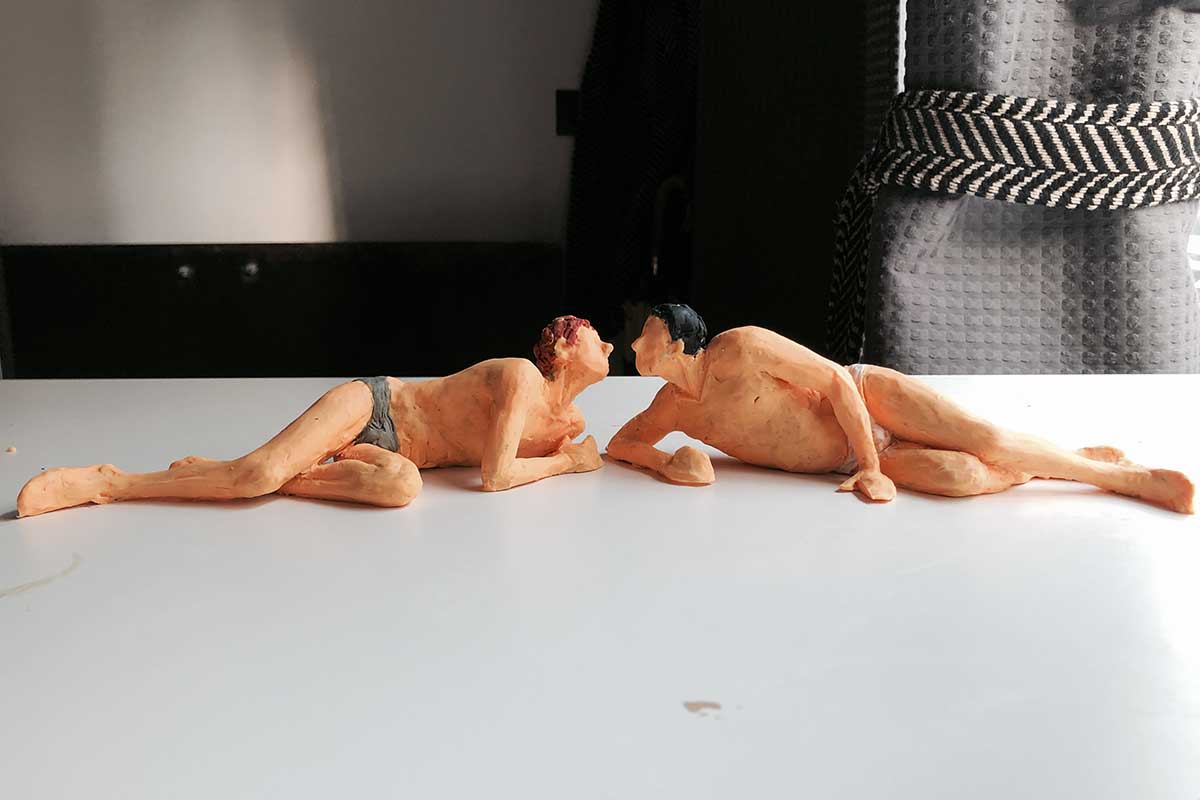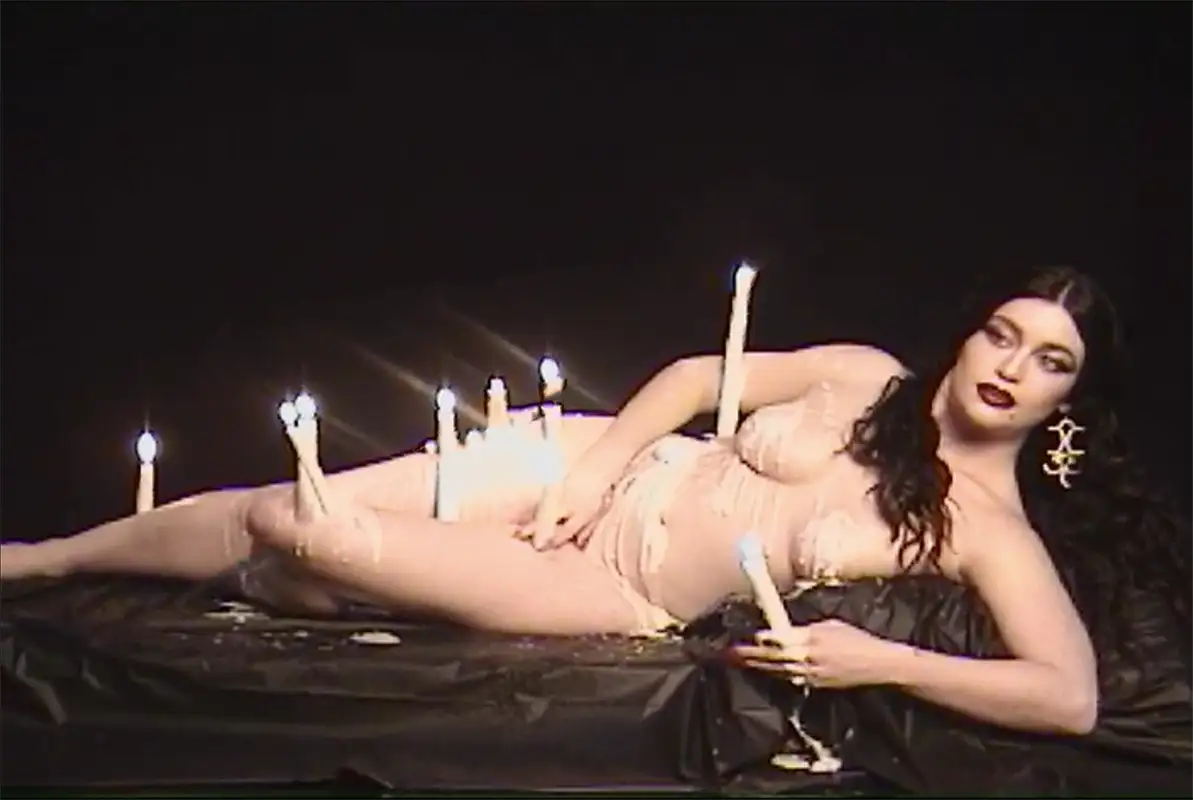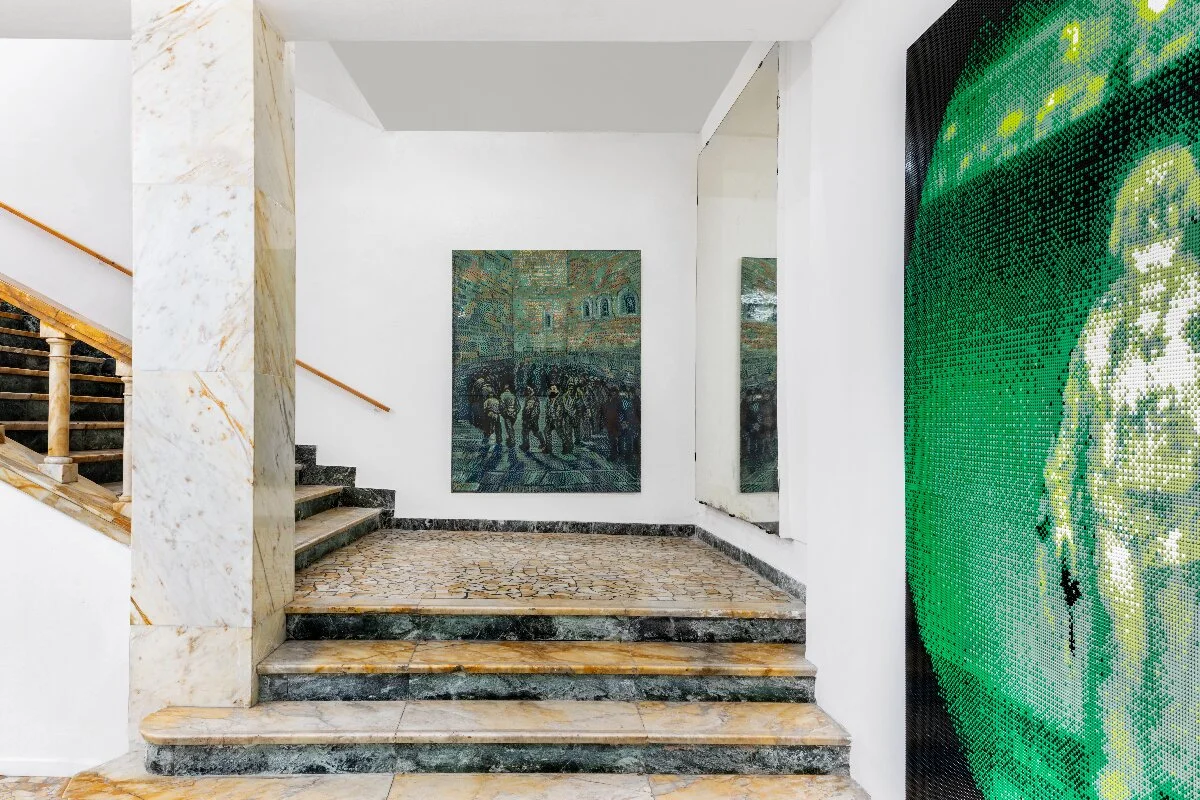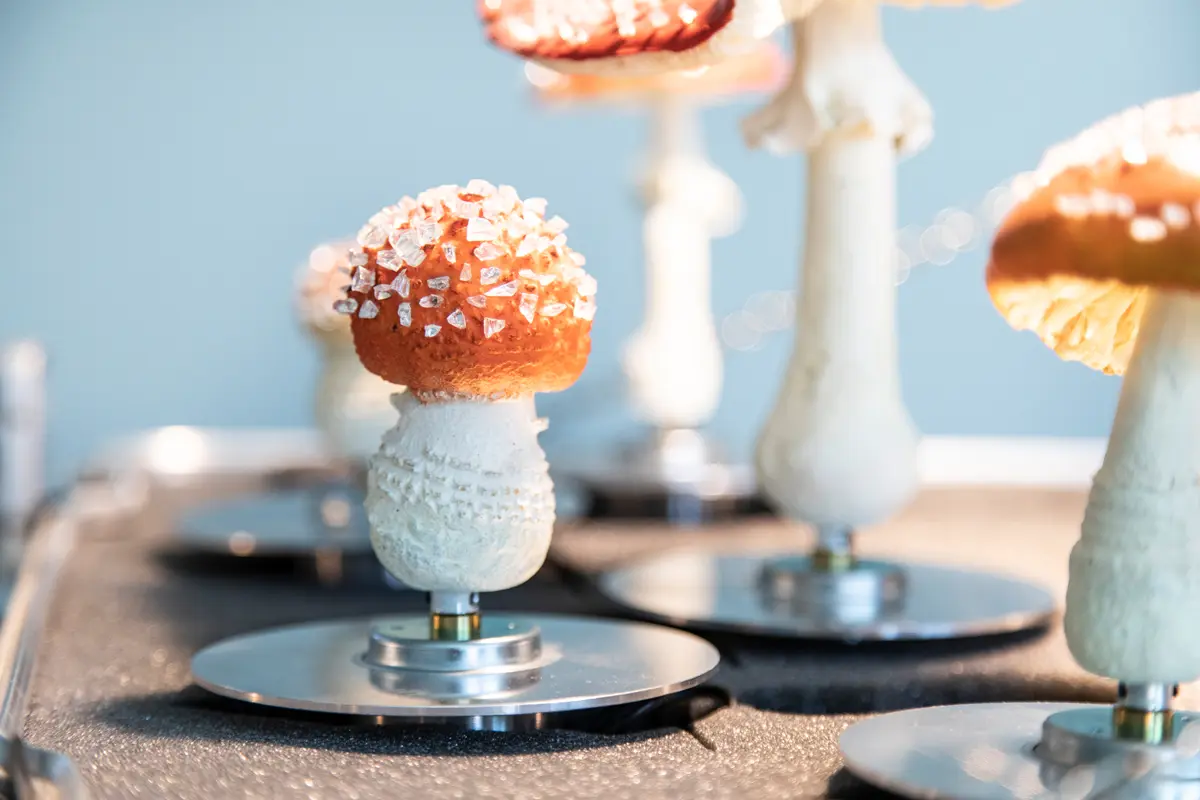Former architect turned visual artist, Tatiana Brodatch explores love and nudity: «My plasticine people are the actors. The photographs and the stop-motion are the play»
Tatiana Brodatch: intimacy and eroticism
In 2013, Tatiana Brodatch began to distance herself from her architectural profession and stumbled upon the next love of her life: plasticine. In the following period, the artist renounced her role as an architect and decided to focus on her art, a process which saw the creation of Brodatch’s plasticine people, the accompanying photography and the stop-motion videos.
Through the sculptural pieces, Brodatch conceives moments of intimacy and even eroticism, yet her actors as she refers to them are never taboo or vulgar, merely demonstrating the physicality of love and how we as humans are born with a natural desire to love and be loved. In 2018, in collaboration with the Italian design company Seletti, Brodatch presented her installation Love is a Verb, a selection of thirty-five plasticine figures positioned on a bed and a projection of a stop-motion video.
The exhibition was shown in Milan and consequently travelled to Paris. The following year, for the exhibition Personal Belongings, Brodatch presented her figures alongside works by Iranian artist Mahmoud Saleh Mohammadi at Spazio Nour art gallery. Brodatch continues to collaborate with other art forms, including the recent limited capsule collection with Russian fashion designer Sergey Soroka: SSXOC x Tatiana Brodatch.
Tatiana Brodatch talks to Lampoon
We recently spoke with the artist on her architectural background, experimenting with diverse materials, and the relationship between the sculptures and stop-motion videos.
Glesni Williams: From architect to visual artist.
Tatiana Brodatch: I graduated in architecture twenty years ago, which was when I first came to Italy, where I did a year of study and then decided to stay longer. I was in love with architecture and my plan was to build a career as an architect. I practiced for fifteen years, in both Moscow and in Italy.
Yet in 2013 I started to model sculptures, it was a period in which I was working less as there were fewer projects at that time, I was gradually growing distant from architecture, my second child had just been born, I was in Russia, a period in which I was quite politically active. I found myself in an exhausting period. By chance I started to sculpt and it was such a great discovery, because it gave me this new energy, a form of self-therapy.
For the first time in my life, I could talk about what I’ve always been interested in, which is human nature. In architecture it’s a very long way before you are able to discuss human nature whereas with the sculptures it is instant. I began to make these human characters, which were based on myself and the people I know. The feeling I had was that I had discovered a language that I knew but had forgotten. My hands possessed this capacity to sculpt, and that was precisely what I wanted to express. The moulding became contemporarily satisfying and therapeutic.
Experimenting with plasticine
GW: Can you elaborate on how you came to work specifically with Plasticine.
TB: The initial idea was to create stop-motion videos with plasticine. The experience started with my best friend, with whom I wanted to do something different and fun. In Russia, when I was little, I was brought up watching cartoons made with plasticine and stop-motion. Therefore it made sense to use plasticine for our videos. We were intrigued to see where the idea of the stop-motion would take us. Yet, when I brought the plasticine home and started moulding, it became something totally different for me. I almost became crazy with the sculptures; I began to create every day and in only three days I had already made my first video.
GW: Do you experiment with other materials?
TB: I am most satisfied with plasticine as my main material. I work with bronze and for a period of time I went to Murano to experiment working with glass. I have recently started to sculpt with clay, a traditional material but it’s much faster than plasticine. The proportions of the pieces change depending on the material used.
GW: Does your background in architecture influence your artistic process?
TB: It’s about classic forms, whether figuratively or in buildings. You can feel the purity of the form and the minimalism aspect of my work. All of which derive from my architectural education, background and point of view. I search archetypes.
Photography and stop-motion videos
GW: You also work with other mediums, such as photography.
TB: My work is similar to a theater setting, and the plasticine sculptures to me are the actors. We are able to appreciate the work of the actor when he is on stage, the interpretation. We love the character which is born. There wouldn’t be a character without the actor, without the stage or the theater.
The work of art is what you see on stage, this is the same for my pieces. The sculptural artworks cannot exist without the photographs and the stop-motion videos, each piece needs the other. My plasticine people are actors. The photographs and the stop-motion are the play. You cannot separate them from each other. The work starts through the sculpture and then transforms into photographs and stop-motion videos.
The more a sculpture is used as an actor, to create more scenes and moments, the more realistic it becomes. Whenever I have exhibited my works, there has always been an installation to include stop-motion footage.
Intimacy and nudity
GW: Intimacy and nudity are prominent themes within your sculptural pieces. Where do you find inspiration?
TB: Art shows. Unfortunately, at the moment we are deprived of these much-needed spaces. It is always inspiring when you like what you do, which isn’t always a given, when you create something with your own hands. You feel moved. I enjoy making portraits, and I enjoy working with models, almost in a classic, traditional method. The artist is completely present in this moment, a process which starts with the eyes through the body and out through the hands. I miss interacting with different people. Ideally, I would like to exhibit this year, most likely in Milan as it’s where I live and work, therefore facilitating the whole process if I am able to exhibit. I am considering an exhibition of portraits, perhaps slightly animated. The main desire for this year is to exhibit, as we are all missing it.
Tatiana Brodatch
Tatiana Brodatch (Moscow, 1977) is a Russian artist who for the past twenty years lives and works in Milan. Brodatch studied at the Institute of Architecture in Moscow, and during an Erasmus study abroad year she discovered and felt at home in the Italian city where she now resides. After her decision to distance herself from architecture and work on her artistic research, she attended Accademia di Brera to retrain as a sculptor.


